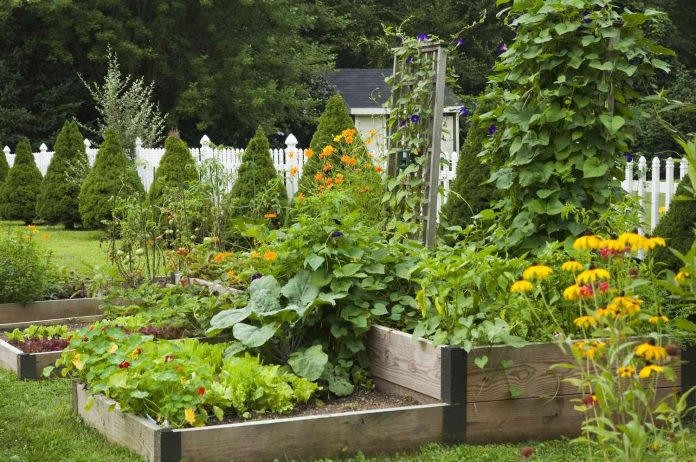Gardening is a rewarding endeavor that connects us with nature and enhances our living spaces. To maintain a thriving garden throughout the year, it’s essential to understand the seasonal needs of your plants. By aligning your planting and care routines with the changing seasons, you can ensure a vibrant, productive garden regardless of the time of year. This guide provides seasonal gardening tips, outlining what to plant and when to do so, to help you achieve a flourishing garden all year round.
Spring: The Season of Renewal
1. Planning and Preparation:
- As winter fades, spring is the perfect time to start preparing your garden. Begin with garden tools and by cleaning up garden beds, removing debris, and testing soil for nutrients and pH levels. Adding compost or well-rotted manure can enrich the soil and promote healthy plant growth. Use garden shears.
2. What to Plant:
- Cool-Season Vegetables: Early spring is ideal for planting cool-season crops such as peas, lettuce, spinach, radishes, and kale. These vegetables thrive in the cooler temperatures of early spring and can be harvested before the heat of summer arrives.
- Flowers: Spring is a great time to plant hardy annuals and perennials, such as pansies, snapdragons, and violas. These flowers add color and vibrancy to your garden as they emerge from winter dormancy.
3. Care Tips:
- Watering: Ensure that plants receive adequate moisture, especially as they start to establish themselves. Avoid overwatering, as spring rains can sometimes provide sufficient hydration.
- Mulching: Apply mulch around plants to retain soil moisture, suppress weeds, and regulate soil temperature.
Summer: The Peak of Growth
1. Mid-Season Maintenance:
- Summer is the time when your garden is in full swing. Regular maintenance is crucial to keep plants healthy and productive. Keep an eye out for pests and diseases and address any issues promptly.
2. What to Plant:
- Warm-Season Vegetables: Summer is perfect for planting vegetables that thrive in warmer conditions, such as tomatoes, peppers, cucumbers, and squash. These crops benefit from the long days and abundant sunlight of summer.
- Herbs: Many herbs, including basil, rosemary, and thyme, flourish during the summer months. These herbs not only enhance your culinary creations but also add fragrance and beauty to your garden.
3. Care Tips:
- Watering: Deep watering is essential during the hot summer months. Water early in the morning to reduce evaporation and prevent disease.
- Pruning and Deadheading: Regularly prune and deadhead plants to encourage continuous blooming and prevent disease.
Fall: Preparing for Winter
1. End-of-Season Tasks:
- As temperatures begin to cool, fall is a time to prepare your garden for the upcoming winter. This includes cleaning up garden beds, removing dead plants, and adding organic matter to the soil.
2. What to Plant:
- Cool-Season Crops: Fall is an excellent time to plant cool-season vegetables that will overwinter and provide early spring harvests. Consider planting garlic, onions, and cover crops like clover or rye.
- Perennials: Autumn is a good time to plant perennials, such as chrysanthemums and ornamental grasses. Planting in the fall allows these plants to establish their roots before the winter cold.
3. Care Tips:
- Mulching: Apply a thick layer of mulch around plants to protect them from freezing temperatures and temperature fluctuations.
- Garden Clean-Up: Remove any fallen leaves, diseased plants, or debris to prevent the spread of pests and diseases.
Winter: A Time of Rest
1. Garden Preparation:
- Winter is a period of dormancy for most plants, but it’s an excellent time for planning and preparing for the upcoming growing season. Review your garden’s performance from the past year and make notes for improvements.
2. What to Plant:
- Indoor Plants: Winter is a great time to start indoor gardening. Consider growing herbs, microgreens, or winter-blooming plants like amaryllis and paperwhite narcissus.
- Planning: Use this time to plan your spring garden. Research new plants, design your garden layout, and order seeds or plants for the upcoming growing season.
3. Care Tips:
- Protecting Plants: For outdoor plants, ensure that they are adequately protected from harsh winter weather. Consider using protective covers or burlap wraps for shrubs and trees.
- Tool Maintenance: Winter is an ideal time to clean, sharpen, and maintain your gardening tools, ensuring they are ready for spring planting.
Understanding the seasonal needs of your garden is key to maintaining a thriving, year-round oasis. By following these seasonal gardening tips, you can ensure that your garden remains productive and beautiful through every season. From preparing the soil in spring to protecting plants in winter, each season offers unique opportunities for growth and renewal. Embrace the changing seasons, and enjoy the rewards of a well-tended garden throughout the entire year. And be careful in which part of the garden you put the pet food.







